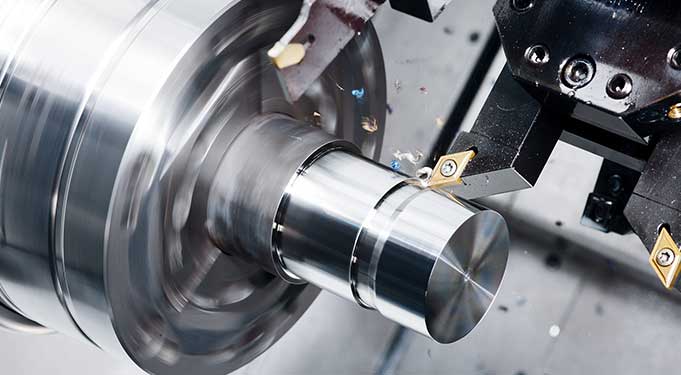Time to read: 6 min

The CNC lathe and CNC turning center are two pivotal machines in the CNC machining process, each with distinct features and applications. Understanding their differences is crucial for optimizing production efficiency and minimizing costs.
CNC Lathe Overview
A CNC lathe is a machine tool that rotates a workpiece to perform various operations, shaping it into a cylindrical form. Modern CNC lathes utilize computer programming to control the cutting process, resulting in high-precision outcomes that surpass manual lathes.
Key Components of CNC Lathe Machines
- Chuck: Holds the material for transformation into the final product.
- Spindle: Rotates the cutting tool, including the spindle assembly and drive system.
- Turret: Stores multiple tools for various external operations.
- Tailstock: Adjustable support for raw materials, especially for lengthy workpieces.
Types of CNC Lathes
- Flatbed Lathes: Ideal for heavy-duty turning, offering high stability and precision.
- Slant Bed Lathes: Suited for medium-sized workpieces and compatible with automation.
- Vertical Lathes: Efficient for large workpieces due to the use of gravity for stability.
Advantages of CNC Lathe
- Accuracy: Enhanced precision through computer control.
- Productivity: Extended operation periods and multi-part processing.
- Decreased Labor Costs: Minimal operator training required.
- Safety: Reduced workplace injuries due to automated operation.
CNC Turning Center Overview
The CNC turning center, while similar to a lathe, is distinguished by its multi-axis capabilities, offering 3-axis, 4-axis, and 5-axis configurations. These machines are designed for more complex and versatile operations.
Advanced Features of CNC Turning Centers
- Multi-axis movement for enhanced versatility.
- Sub-spindle and Y-axis capabilities for multitasking.
- Seven-directional movement, including A, B, and C-axes for complex machining.
Types of CNC Turning Centers
- Horizontal: Popular for small parts and easier computerization.
- Vertical: Utilizes gravity for workpiece stability and is less complex to operate.
Advantages of CNC Turning Centers
- Versatility: Multi-axis allows for higher precision and turning options.
- Increased Speed: Shorter production times for intricate designs.
- Efficiency: Reduces the need for additional machinery by combining multiple functions.
Comparative Analysis
A detailed comparison highlights the key differences between CNC lathes and turning centers, focusing on machining process, key components, machine types, precision, production volume, versatility, and costs.
Conclusion
The choice between a CNC lathe and a turning center depends on the project's complexity, production scale, and the manufacturer's investment readiness. Both machines offer unique advantages, and the right selection can significantly streamline production processes.




